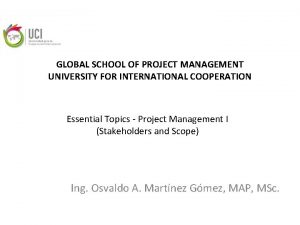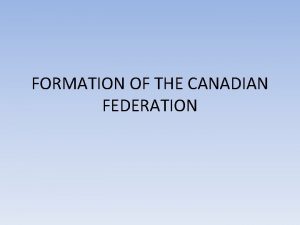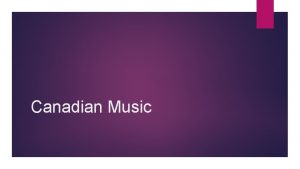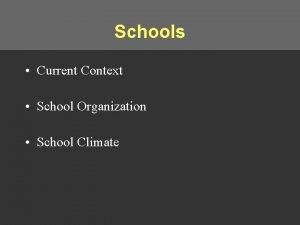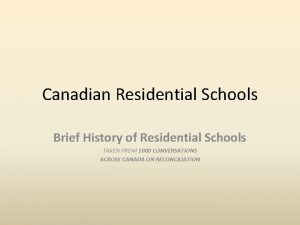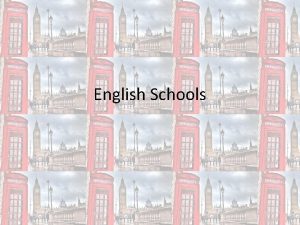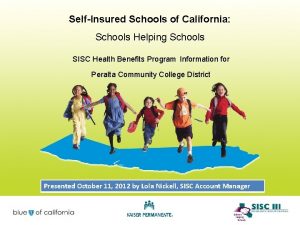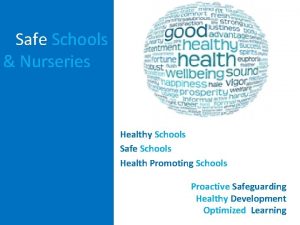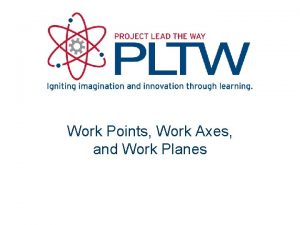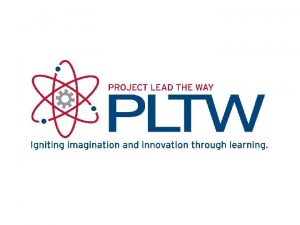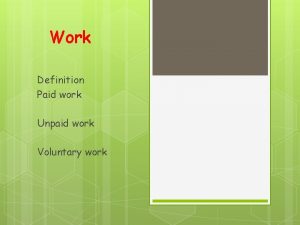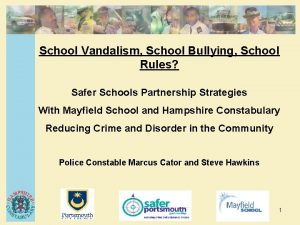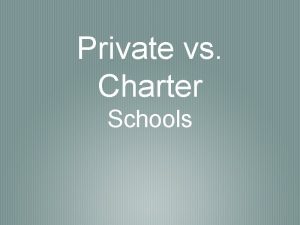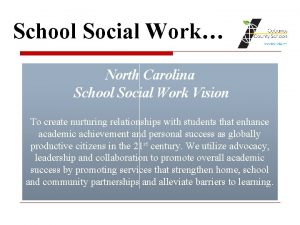The Canadian School System How Canadian Schools Work


















- Slides: 18

The Canadian School System

How Canadian Schools Work Most children attend elementary school and then high school. Usually, children enter high school at about age 13 or 14. Some school systems have middle schools that children attend for two years before they enter high school. Children between six and 16 must attend school and most of them go to public schools. In elementary and high school, classes usually start in early September and end in late June.

There is usually a two-week vacation in December and a one-week vacation in either February or March. Children attend school Monday to Friday, for about six hours a day. They usually bring their lunch to school, but sometimes return home for lunch if they live close to their school.

Possible Divisions Pre-school (optional): age 4 – 5 Kindergarten: age 5 Elementary School: Grades 1 – 6 (age 6 – 11) Middle / Junior High School: Grades 7 – 9 (age 12 – 14) High School: Grades 10 – 12 (age 15 – 17 / 18)

Typical Classroom Environment

Most children in Canada attend public schools, although some attend private schools. Public schools do not charge school fees for children to attend and private schools do charge fees. Boys and girls share classrooms and are taught together in most public schools. Teachers must be qualified and licensed to teach in the classroom. All academic teachers have at least one university degree and special training in education.

Language The language of instruction in Canada is either English or French. If a student has difficulty in these languages, additional language training is usually available. In Quebec, almost all children must attend Frenchlanguage schools.

Religion A large number of religions are practiced in Canada. For this reason, religion does not play an active role in most regular public schools. Public schools usually teach children about the different religions of the world instead of providing instruction in one religion. In some provinces, faith-based schools are available within the public school system. And there are many faith-based private school across Canada.

School Buses Children often take school buses (provided by the school at little or no cost to parents) or public transportation to get them from home to school and back.

Dress Code Each school has a dress code that describes the clothes that children may wear to school. Some schools require children to wear a uniform.

Report Cards Report cards tell you how your child is performing in school. Depending on the province or territory in which you live, your child will receive a report card three to four times a year.

Extra-Curricular Activities Extra-curricular activities are activities that take place outside of school hours—before school, after school or during lunch. These activities may include sports, hobbies, travel, leadership, arts or volunteer work.

School Boards School boards govern the work of public schools from nursery school to high school. Each public school in Canada belongs to a school board. Each private school decides on its own how it will run.

School board trustees are people elected to set policies about how public schools will operate. Trustees hold meetings with the public to tell them of any plans that concern the schools. At these meetings, community members are welcome to voice their concerns about the school, the public school system or anything else about their children’s education.

Post-Secondary Education

College: community college, technical school, applied arts, applied science school (certificates, diplomas, associate degrees, bachelor’s degrees. . . ) University: undergraduate and postgraguate education (academic degrees in a variety of subjects) Graduate School: academic certificates, diplomas and degrees (i. e. Master’s Degree, Ph. D)

A worldwide truth. . .

Sources: http: //www. cic. gc. ca/english/newcomers/beforeeducation-schools. asp http: //www. cic. gc. ca/english/newcomers/beforeeducation-classroom. asp
 Huntsville.powerschool.com
Huntsville.powerschool.com Reach safety target
Reach safety target Wbs for school management system
Wbs for school management system Hát kết hợp bộ gõ cơ thể
Hát kết hợp bộ gõ cơ thể Ng-html
Ng-html Bổ thể
Bổ thể Tỉ lệ cơ thể trẻ em
Tỉ lệ cơ thể trẻ em Gấu đi như thế nào
Gấu đi như thế nào Chụp phim tư thế worms-breton
Chụp phim tư thế worms-breton Chúa sống lại
Chúa sống lại Các môn thể thao bắt đầu bằng tiếng chạy
Các môn thể thao bắt đầu bằng tiếng chạy Thế nào là hệ số cao nhất
Thế nào là hệ số cao nhất Các châu lục và đại dương trên thế giới
Các châu lục và đại dương trên thế giới Công thức tính độ biến thiên đông lượng
Công thức tính độ biến thiên đông lượng Trời xanh đây là của chúng ta thể thơ
Trời xanh đây là của chúng ta thể thơ Mật thư anh em như thể tay chân
Mật thư anh em như thể tay chân Phép trừ bù
Phép trừ bù độ dài liên kết
độ dài liên kết Các châu lục và đại dương trên thế giới
Các châu lục và đại dương trên thế giới


